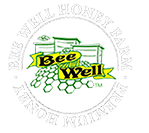Estimated reading time: 3 minutes
Source: Real Food For Life
Discover the health benefits of honey – one of the oldest sweeteners on earth, plus some interesting trivia, some great recipes and a few cautions.
Bees swallow, digest, and regurgitate nectar to make honey; this nectar contains almost 600 compounds. We need our bees, so let’s do everything we can to save them and keep them here on this earth.
Honey is so good we have included it in our list of power foods that should be in your kitchen right now.
“My son, eat thou honey, for it is good” — King Solomon – Proverbs: 24:13
Health Benefits of Honey
1. Prevent cancer and heart disease
Honey contains flavonoids, antioxidants that help reduce the risk of some cancers and heart disease.
2. Reduce ulcers and other gastrointestinal disorders
Recent research shows that honey treatment may help disorders such as ulcers and bacterial gastroenteritis. This may be related to the 3rd benefit.
3. Anti-bacterial, anti-fungal, anti-fungal
“All honey is antibacterial because the bees add an enzyme that makes hydrogen peroxide,” said Peter Molan, director of the Honey Research Unit at the University of Waikato in New Zealand.
4. Increase athletic performance
Ancient Olympic athletes would eat honey and dried figs to enhance their performance. This has now been verified with modern studies, showing that it is superior in maintaining glycogen levels and improving recovery time than other sweeteners.
5. Reduce cough and throat irritation
Honey helps with coughs, particularly buckwheat honey. In a study of 105 children, a single dose of buckwheat honey was just as effective as a single dose of dextromethorphan in relieving nocturnal cough and allowing proper sleep.
6. Balance the 5 elements
Honey has been used in ayurvedic medicine in India for at least 4000 years and is considered to affect all three of the body’s primitive material imbalances positively. It is also said to be useful in improving eyesight, weight loss, curing impotence and premature ejaculation, urinary tract disorders, bronchial asthma, diarrhea, and nausea.
Honey is referred to as “Yogavahi” since it has the quality of penetrating the deepest tissues of the body. When honey is used with other herbal preparations, it enhances the medicinal qualities of those preparations and also helps them to reach the deeper tissues.
7. Blood sugar regulation
Even though honey contains simple sugars, it is NOT the same as white sugar or artificial sweeteners. Its exact combination of fructose and glucose actually helps the body regulate blood sugar levels. Some kinds of honey have a low hypoglycemic index, so they don’t jolt your blood sugar. Watch this video Sweetener Comparison where I compare stevia, brown rice syrup, honey, molasses, and agave, and discuss the strengths and weaknesses of each.
8. Heal wounds and burns
External application of honey has been shown to be as effective as conventional treatment with silver sulfadiazine. It is speculated that the drying effect of the simple sugars and honey’s antibacterial nature combine to create this effect. Studies have shown honey to be very successful in healing wounds.
9. Probiotic
Some varieties of honey possess large amounts of friendly bacteria. This includes up to 6 species of lactobacilli and 4 species of bifidobacteria. This may explain many of the “mysterious therapeutic properties of honey.”
10. Strengthen the immune system
Manuka Honey has been found to stimulate the production of immune cells according to a study at the School of Medicine, Cardiff University, UK.
Estimated reading time: 1 minute
The media buzz currently centers around a healthier style of living and making good food choices. Local, raw honey is not only a great food choice but can also be used for beauty treatments and health care.
honey is not only a great food choice but can also be used for beauty treatments and health care.
Bee Well Honey offers several varieties of honey. All of our honey is raw and unpasteurized.
Our Wildflower Honey is made from a variety of blooming plants, trees, and bushes in our region. Tulip Poplar, Holly, Maple, Blackberry, Vetch, and others give our local Wildflower honey a rich smooth taste.
We have local seasonal varieties in years that the bees and the weather cooperate. The Sourwood trees blooming along the mountainsides provide our raw Sourwood Honey. This variety is limited in supply and highly sought after by local honey enthusiasts.
Our southeast regional honey choices include Orange Blossom Honey and Tupelo Honey. Each has a distinctive taste and add an extra splash of flavor to your hot coffee or tea.
All of our honey products are raw, natural, 100% pure honey.
Have you ever had honey in your pantry that is ‘crystallized’ and feels ‘gritty’? What you are feeling is the little granules starting to form when honey naturally granulates or hardens. It doesn’t mean it is going bad. In fact, that is nature’s way of preserving its finest sweetener.
Creamed honey is a type of honey that’s been processed in a special way. The reason you do this is to promote the formation of small sugar crystals and prevent large ones, and this ensures the honey will remain creamy and easy to spread. Creamed honey can be used as a sweetener in drinks and baking, but it’s also great as a spread on toast, crackers, and other treats.
Creamed Honey Recipe
- 16 ounces (454 g) Bee Well Honey
- 1½ ounces (45 g) Seed honey
- 1 teaspoon (2.6 g) cinnamon (optional)
- 1 teaspoon (5 g) herbs (optional)
- 1 teaspoon (5 ml) vanilla (optional)
Use honey that’s already been creamed. The process of making creamed honey involves adding seed honey to liquid honey. Seed honey has already crystallized, so it promotes more crystallization in fresh liquid honey. One of the seed types you can use is honey that’s already been creamed.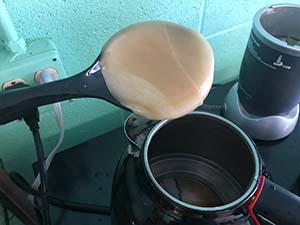
- Creamed honey can be purchased in many grocery stores, health food stores, at farmers markets, and at bee farms.
- Creamed honey will sometimes be labeled whipped, spun, or set honey.
Use crystallized honey powder. Another seed you can use to make creamed honey is the hardened sugar crystals from previously liquid honey. Unprocessed honey naturally crystallizes over time, and you can collect this hardened honey and powder it to use as seed honey.
- Collect the crystallized honey from an old jar of honey. Place the crystals in a blender or food processor and grind the crystals into a fine powder. This breaks down the large crystals, and these will seed the growth of more small crystals in your new batch of creamed honey.
- You can also grind the crystallized honey using a pestle and mortar
Make your own honey crystals. If you don’t have creamed honey or an old jar of crystallized liquid honey on hand, you can make your own crystals with a jar of new honey that hasn’t been pasteurized or filtered.
- Take the lid off the jar of honey. Place the jar in the fridge. Reduce the temperature of the fridge to 58 F (14 C) or lower.
- Over the next few days, the sugar in the honey will gradually crystallize. Collect the hardened crystals once you have enough for a seed to make your creamed honey.
- Process the crystallized honey in a blender, food processor, or with a pestle and mortar to turn it into a fine powder
Gather your ingredients. There are two main types of honey available on the market: raw unfiltered honey and pasteurized honey. The pasteurization process kills pollen, spores, and bacteria, and you can do this on your own by heating the honey before adding the seed. To make pasteurized creamed honey, you’ll need: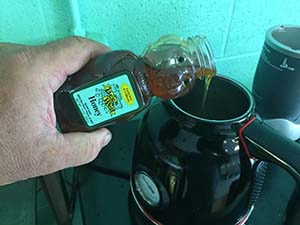
- Steam Kettle
- Your liquid honey and seed honey
- A medium saucepan with a lid
- A rubber spatula or wooden spoon
- A candy thermometer
- A sterilized storage jar with a lid
Heat the honey. Pour the liquid honey into the saucepan and heat it over medium-high heat. Use the candy thermometer to monitor the temperature, and bring the honey to 140 F (60 C).
- Along with killing bacteria, heating the honey will also remove any large crystals that have already formed. If large crystals form rather than small ones, the honey will harden instead of becoming smooth and spreadable.
- To make a larger batch of creamed honey, increase the ratios of liquid honey and seed honey. For the seed honey, use about 10 percent of the quantity of liquid honey.
Stir frequently. To prevent burning, stir the honey regularly as it heats. While it’s heating up, you can also add additional flavorings and ingredients to the honey if you like. You can gradually add in:
- Cinnamon
- Vanilla
- Dried herbs, such as thyme or oregano
Cool the honey and skim the bubbles. When the honey reaches 140 F (60 C), remove it from the heat. Set it aside and let it cool to about 95 F (35 C). As the honey cools, bubbles will rise to the surface. Skim the bubbles and the foam off the top.
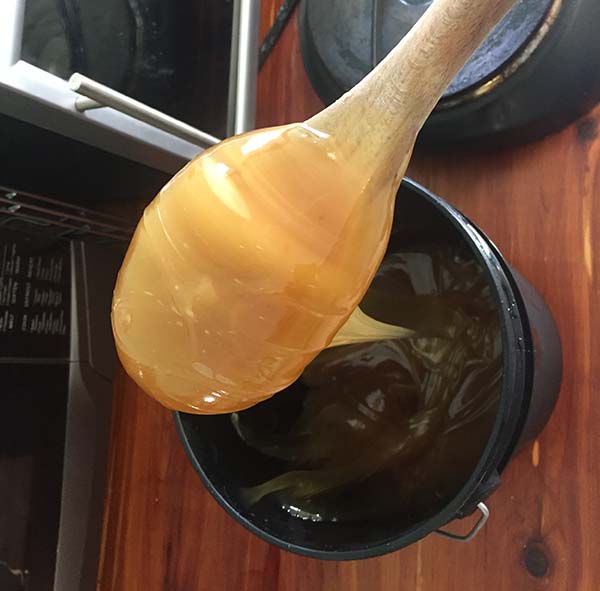
Add the seed. While the honey is still between 90 and 95 F (32 and 35 C), add in the seed honey. Stir gently until the seed honey has been fully incorporated into the liquid honey.
- It’s important to stir gently so that you don’t create more air bubbles
Let the honey rest. Place the lid on the saucepan and set the honey aside to rest for at least 12 hours. During this time, more bubbles will rise to the surface, and the seeding process will begin.
- Over time, the small sugar crystals in the seed honey will help more small crystals grow. As the crystals spread, the entire mixture will turn to creamed honey.
Skim off the bubbles before bottling. Once the honey has had time to rest, skim off any bubbles that have risen to the surface. Transfer the honey to a sterilized glass or plastic container and screw on the lid.
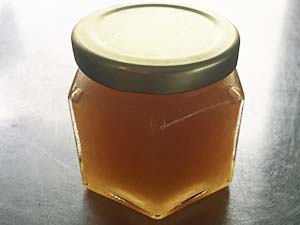
- It’s not absolutely necessary to remove the air bubbles from the honey, but it will improve the appearance of the final product.
Store the honey somewhere cool for about a week. Transfer the honey to an environment that constantly remains around 57 F (14 C). Leave the honey to crystallize for at least five days, and up to two weeks.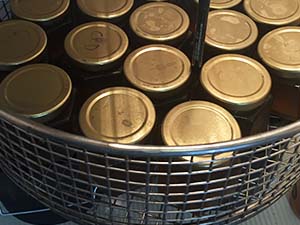
- Good places to store the honey during this time include a basement, cold cellar, refrigerator, or cold garage.
- Once the honey is ready, store it in the cupboard or pantry.
One of the tastiest and healthiest treats you can eat is sweet honey candy. All the confection recipes described in this article are made from the natural result of hard-working honeybees, so every bite will call to mind the sweet honey produced by our industrious little friends. If you enjoy making your own treats, and you appreciate the natural goodness of honey, these are recipes you just can’t go wrong on. Here are a few easy-to-make treats that the whole family will love.
Honey candy
Put 2 cups of honey into a fry pan, and boil until it reaches a soft ball stage, after which you can pour it into a cooling pan. When the honey has become cool enough to handle, take it out of the cooling pan and start pulling it until a creamy consistency is achieved. Stretch this into a rope which is 1/2″ to 1″ wide, then cut into bite-size pieces.
Honey nut candy
Mix 2 cups of white sugar with 1/2 cup of milk, 1/4 cup of butter and 1/4 cup of honey in a saucepan, and cook the whole mixture without stirring until it becomes a soft ball. Beat this until it’s thoroughly mixed, then add 1/2 cup of nuts and pour into a lightly buttered dish. Cut into snack-sized squares and enjoy!
Honey crunch candy
Mix together 1/4 cup of honey, 1/3 cup of butter, 3/4 cup of brown sugar, and 1/2 teaspoon of cinnamon into a 2-qt mixing bowl, preferably of glass construction. Microwave this mixture at a high-temperature with no covering, for about 4 1/2 minutes, or for two minutes after you first see the mixture start to boil. Add in 1 teaspoon of vanilla, 4 cups of whole-grain flakes cereal, and 1 cup of dry-roasted peanuts. After this is all well mixed, drop spoonful’s onto waxed paper and allow plenty of time for it to cool, so it can set.
Bit-o-honey candy
Mix together 3/4 cup of sugar, 2 tablespoons butter, 2 tablespoons peanut butter, 1/2 cup of milk, 1/4 cup of brown sugar, and a pinch of salt into a saucepan at medium heat, until it comes to a boil. Allow the mixture to boil for 10 minutes, while stirring occasionally. Add in 7 ounces of marshmallow cream and 1 teaspoon of vanilla, before pouring the hot mixture into a lightly buttered pie dish. Allow the mixture to set by chilling, and then it will be ready to serve.
Where can you get the main ingredient?
If you live in South Carolina, or happen to be traveling through the area around Greenville and Spartanburg, make sure to stop in the town of Pickens at the Bee Well Honey Farm, where you can find the most delicious, raw and unfiltered honey anywhere around. Here we have the best honey to use for making your own sweet honey candy treats, as well as all kinds of beekeeping supplies, for those of you interested in taking up the hobby yourselves.
The skin says a lot about the general health of a human body. As a result, skin care is one of the most important routines that healthy people are keen to maintain while using the right ingredients. The benefits of using natural honey for skin care have been documented over the years. An all-natural honey face mask will enable your skin tap into the potent healing properties of raw honey. In addition to the glow, healing and well-known health benefits on your face, it is easy to perform at home, only require 15-30 minutes of your time and can be used for all skin types.
Why all natural honey?
Honey cleanses pores and inhibits growth of microbes because of its strong antimicrobial properties that prevents infections. Its waxy part gives a soft, smooth and shiny appearance to your skin. Therefore, you can use it without mixing with any other ingredient. Do not be discouraged by the stickiness because it is extremely beneficial. It pulls away dust and dead skin.
Recipe for a good honey face mask
The recipe for a honey face mask depends on your skin type and purpose. For a dry skin, you need a combination of a teaspoon of natural honey, mashed avocado and plain whole milk yoghurt. Avocado and whole milk yoghurt are deeply moisturizing. When you are dealing with an oily skin you need a mix of 2 tablespoons natural honey, a puree of an apple and half teaspoon of sage. If you have a sensitive skin and react to most of other face creams or masks, combine 2 teaspoons of natural honey and a teaspoon of aloe Vera. Aloe Vera has anti-inflammatory properties to soothe you skin. Although this may seem misplaced, a mask made from natural honey and aspirin is very effective for oily skin.
A number of people need a honey mask to heal scars and clear dark spots. In this case, you need a mixture of honey and lemon. Mix two table spoons of honey with a half tablespoon of lemon juice. This mixture exfoliates the skin, lightens dark spots and fades scars. You can also add yoghurt to this combination. Alternatively, for an acne-prone skin, use a mask out of honey and cinnamon. Here, mix 3 teaspoons of natural honey and half teaspoon of cinnamon. You can go further and experiment with a combination of tea tree oil or kelp aloe vera.
Tips for getting the best out of the mask
Depending on why you are using the face mask and the nature of ingredients involved, apply the mask and rest for about 15 to 30 minutes. Use freshly prepared masks for best results. Where you are using a combination of other ingredients masks, ensure that the other ingredients are organic as well. Once in a while, you can steam your face with the mask on to help you open skin pores. Do not use any type of soap to wash the mask. The results will not come overnight so do not be too hard on yourself. Give yourself a week or two. Find out if you have any allergic reactions to any of the ingredients.
Everyone knows that local honey is produced by the amazing honeybee ! Bee Well Honey has been producing local honey for over 12 years. Operating over 2,000 hives in the South Carolina region, our Wildflower is the most popular local honey around.
Bee Well Honey is pure raw honey that is never pasteurized or heat treated.
In addition to our local varieties such as : Wildflower, Sourwood and Echinacea we also buy specialty honey from regional producers. You may enjoy orange blossom, star thistle, clover, tupelo and other specialty honey in season.
Bee Well Honey – local honey- is available in our retail market in Pickens SC and at fine stores across the southeast. You can also order our honey online and we will deliver it right to your door. !
Buy Bee Well Honey Local Honey and enjoy natures goodness !
Many people in the medical and non-medical field recommend using raw local honey as a form of treatment for nasal allergies. Science continues to argue about whether this form of treatment is effective or if it does work – why ?
While we may not have definitive proof that local honey is effective for allergy treatment, we do have hundreds of customers that do not want to be without it during allergy season.
Please pick up a jar of Bee Well Honey – Wildflower Honey today and start the sweet treatment regime of 1 tablespoon per day. Maybe you will also find some relief from your local allergies. Our Wildflower Honey is available in our natural market in Pickens and at fine retail locations across the Southeast.
You may also order online and have our fine products delivered right to your door ! Order Now.
Bee Well Honey Annual Sale
Bee Well Honey is known for providing high quality products at reasonable prices. Once a year, we have a special sale to say thank you to our loyal customers. As the Christmas season approaches, our customers look forward to the sale with great anticipation. Join us starting this Saturday December 13, 2014 for the kick off to this event. Our 20% off Sale always causes a buzz….
Bee Well Honey has seen a lot of growth over the last several years. What began as one man’s dream to pollinate a small apple orchard, has grown into a major contender in the raw honey market in the Carolinas. Beekeeper, Kerry Owen along with family and a staff of loyal employees spend many hours each season providing customers (retail and wholesale) with a good crop of raw honey. The Natural Market began as a charming wooden structure on the farm and now is housed on a busy street corner near downtown Pickens. Please stop by our current location and enjoy all the healthy foods, supplements, gifts and beekeeping supplies that we have to offer as Bee Well Honey continues growing.
Most honey lovers in our local region are familiar with Sourwood Honey. But what is it exactly and where does it come from ?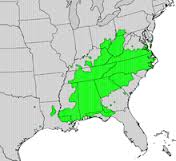
Along the Southern range of the Appalachian Mountains, we find the Sourwood tree . Named thus for the sour taste of the tree leaves. This tree of small stature produces one of the most sought after honey’s in the world. White clusters of bell shaped flowers appear in late June/early July. The best nectar flow is from trees at the higher elevations. Trees in the lower piedmont regions may bloom but rarely produce enough nectar for a honey crop. Sourwood Honey is consumed mostly by local honey connoisseurs as the demand always exceeds supply.
We are able to enjoy Sourwood Honey because the trees bloom at a time that not many other nectar giving plants are in bloom and also because the honeybee practices “flower fidelity”. Once the bees find a good source of nectar, they will work that flower until it is finished. You may have the odd few bees that will work other area flowers but the majority will be the target crop.
Therefore, when the Sourwood tree starts to bloom, We move the bees to the area and put empty honey storage boxes on the hives. After the sourwood bloom is finished, the full boxes of honey are taken to the honey house and extracted. Southern regions tend to have a sourwood color that is a little darker than the almost clear sourwood honey made at the highest elevations.
Sourwood Honey is sought after by many but the supply is always limited and usually available only for a short time. If you like the sweet spicy buttery taste of Sourwood, get it while you can.
Cooking with honey has been a part of our culture for thousands of years. One of the earliest sweeteners known  to man, today we are still impressed by this natural sugar. Laurey Masterton author of The Fresh Honey Cookbook has selected 84 recipes from a Beekeepers Kitchen. In the pages of this book you will find complete recipes, color pictures and detailed information on the delicate flavors of various honeys.
to man, today we are still impressed by this natural sugar. Laurey Masterton author of The Fresh Honey Cookbook has selected 84 recipes from a Beekeepers Kitchen. In the pages of this book you will find complete recipes, color pictures and detailed information on the delicate flavors of various honeys.
“The Fresh Honey Cookbook” is featured in our book section at Bee Well Honey & Natural Market. Here you will find informational books on many life skills, herbal remedies, homesteading, etc.
Stop by our market in Pickens, SC and browse our selection today !
Each year Bee Well Honey enjoys being part of the South Carolina Beekeepers Association meeting in Clemson SC during late July. This meeting of beekeepers from all across the state offers a time of learning, shopping and socializing for many of the states 3,000 small scale beekeepers. Bee Well Honey sets up a booth for the event each year.
Yes, we sell honey but we also offer much much more !
Gifts, beeswax candles, pottery and other special items were on display and are available in our store every day.
We really enjoyed the conference this year and meeting so many of our regular customers as well as making new friends. Bee Well Honey has been helping beekeepers for over 1o years and hopes to continue for many more.
The Honeybee buzz is on at Bee Well Honey. The Spring flow continues with the honeybees gathering nectar from many available blooming plants. This nectar is ripened and transformed into pure sweet honey for all of you to enjoy. The process from nectar to finished honey takes several weeks. As the honeybees finish the honey, we will be extracting (actually we have already started) and new honey becomes available. Enjoy the golden sunshine collected by our honeybees and made available for your enjoyment. Drop by our Pickens store, one of our retail partners or order online today !
